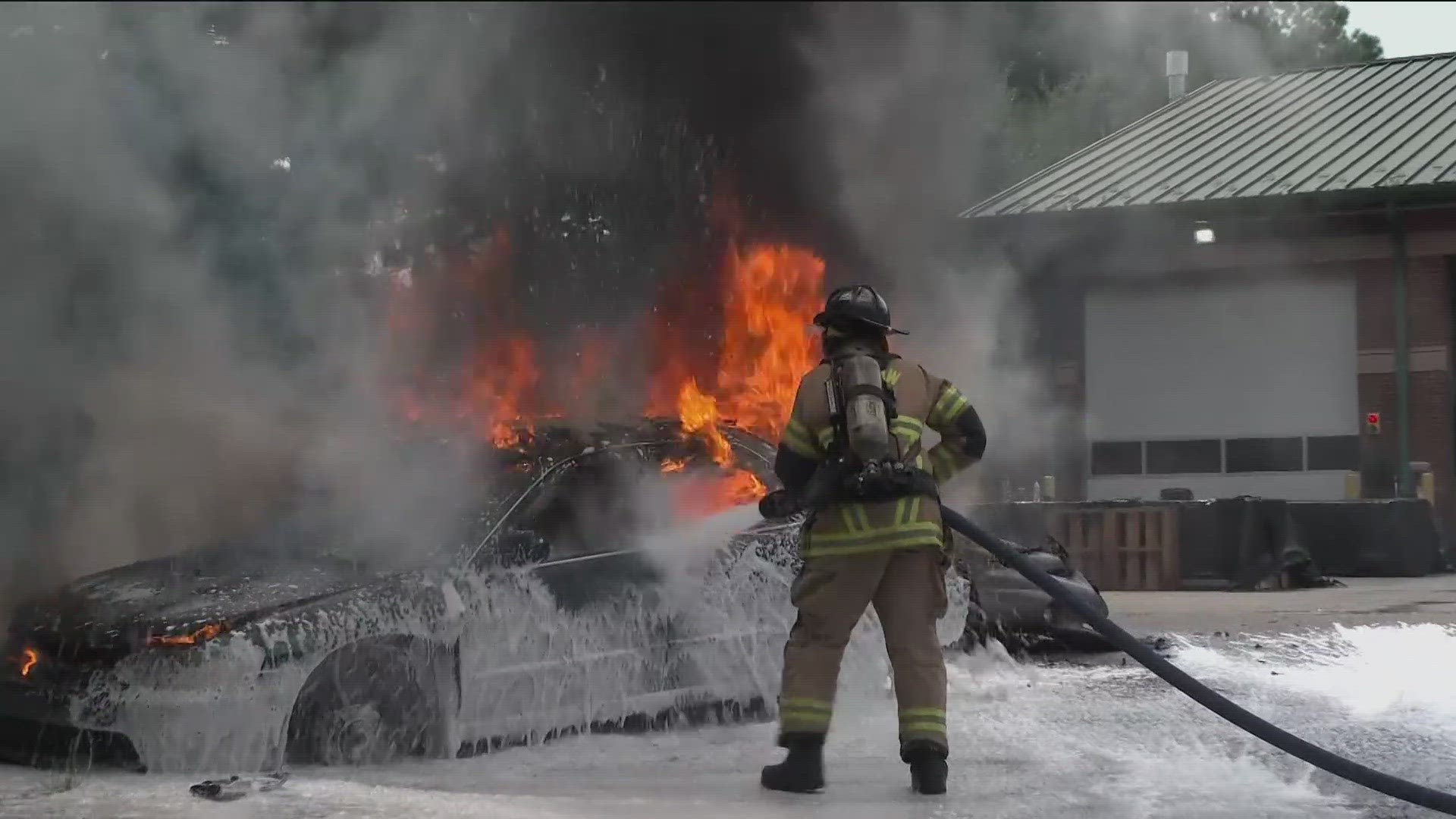COLUMBUS, Ohio — A new program was announced today that will help rid fire departments across the state of Ohio of the toxic firefighting foam.
According to a press statement from Gov. Mike DeWine, the goal of the Aqueous Film Forming Foam(AFFF) Takeback Program is to collect and destroy all firefighting foam that that contains hazardous polyfluoroalkyl substances, otherwise known as PFAS.
The foam will be disposed of using technology created by Battlle. The PFAS AnnihilatorTM technology works by exposing the foam to 'supercritical water oxidation' which destroys AFFF and PFAS-contaminated wastewater too non-detectable levels.
The technology has been used in multiple states to help destroy the 'forever chemicals' within firefighting foam.
The program came to fruition following a 2018 lawsuit between the state of Ohio and Monsanto, a agricultural biotechnology company. According to the lawsuit, Monsanto knowingly subjected Ohio residents to environmental damages caused by its toxic products that contained polychlorinated biphenyl (PCB).
A settlement was reach and Monsanto paid the state $80 million in damages.
The AFFF Takeback Program will be funded by the settlement money received by the state. It is projected to cost roughly three million dollars.
According to Gov. DeWine, the state's fire stations hadn't been able to dispose of the contaminated foam previously, which is what led to the stockpiles of the product.
“Until now, fire departments have had no way to safely dispose of this toxic foam," stated Gov. DeWine. "With this new program, we'll now be able to completely destroy AFFF to prevent dangerous exposure to PFAS and avoid environmental contamination."
The program will be open to all Ohio fire departments, local governments, and government-owned airports.

